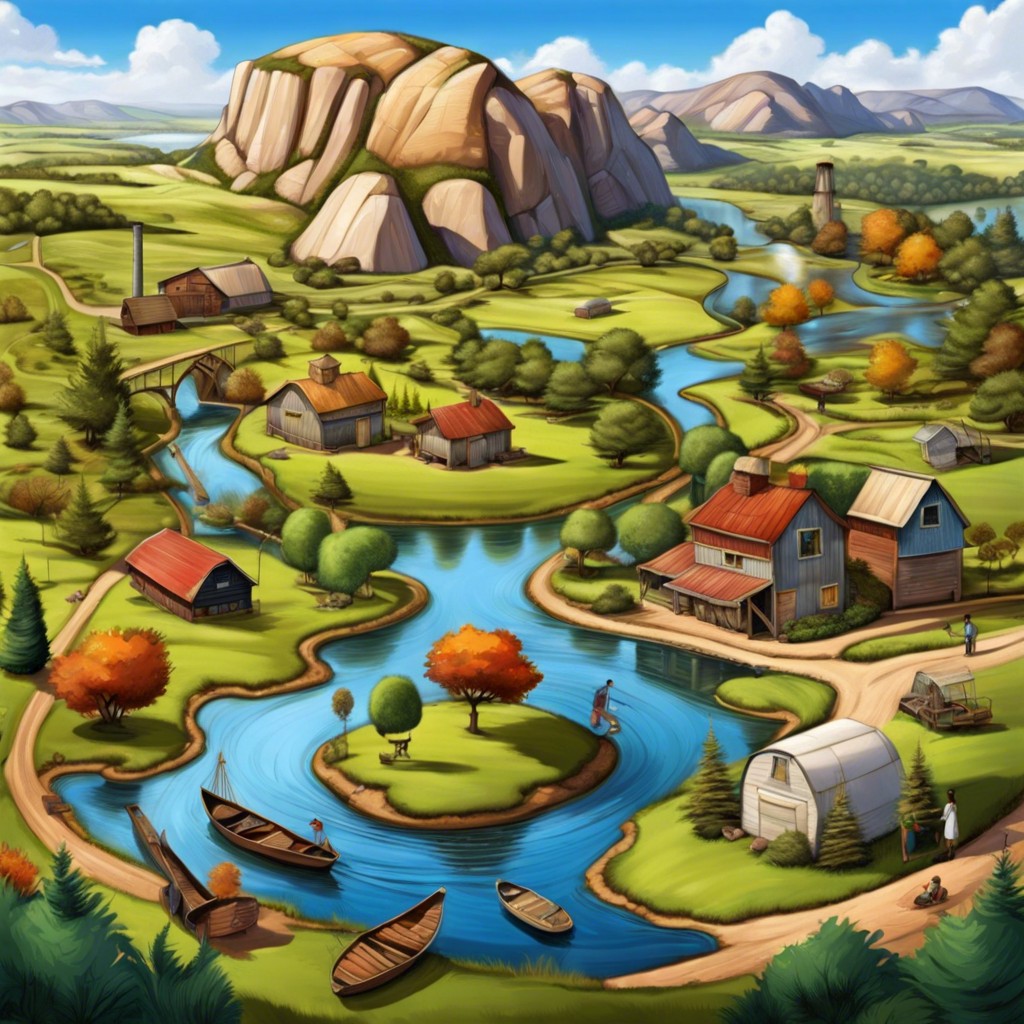Curious about the massive size of Noah’s Ark?
Key takeaways:
- The Ark was roughly 450 feet long, or about one and a half Boeing 747s end-to-end.
- With a volume of 1.5 million cubic feet, the Ark had enough space for two of every animal species.
- Computer simulations have shown that the Ark’s dimensions and design made it surprisingly seaworthy.
- The Ark’s length-to-width ratio of 6:1 is similar to modern cargo ships and provides stability in rough seas.
- The Ark could withstand extreme conditions and avoid capsizing, making it more functional than your typical houseboat.
How Long Was the Ark?
When we talk about the size, the Ark was a whopper. According to biblical descriptions, it was 300 cubits long. Now, unless you’re a time-traveling builder, you probably don’t measure things in cubits. So let’s break it down: a cubit is roughly the length of your forearm, about 18 inches. That means the Ark was about 450 feet long!
Imagine a football field and add another half for good measure. That’s some serious square footage. It’s like parking about one and a half Boeing 747s end-to-end. Or, for a more whimsical comparison, picture fitting around 90 African elephants in single file.
The scale is mind-boggling. Perfect for a grand flotilla of two-by-two animals. Or perhaps a just slightly overzealous yacht party.
How Much Space Was in the Ark?
Imagine fitting three space shuttles into a single wooden boat—sounds like something out of a sci-fi movie, right? Well, Noah didn’t have rocket ships, but his ark was essentially the ancient equivalent.
With a volume of roughly 1.5 million cubic feet, there was enough space to house a small zoo. Think two of every animal species, plus their luggage—straw bedding, snack packs, water supplies. Cozy, but doable.
Using simple math, with an area of 100,000 square feet across three decks, it’s like having a floating mansion. Of course, this mansion doubled as a cargo ship, a pet store, and a bunkhouse. Noah and his family probably had to play Tetris with hay bales and animal pens.
Next time you’re stuck in a small elevator, imagine sharing it with giraffes, elephants, and chickens—all on storm seas. Noah’s accommodations, while ample, made for interesting roommates.
Scientific Study Endorses Seaworthiness of Ark
Modern naval engineers have taken a crack at Noah’s ancient blueprints and, spoiler alert, it’s not science fiction. A group of researchers from the Korea Research Institute of Ships and Ocean Engineering put the Ark through the ultimate test: computer simulations. They analyzed its dimensions, buoyancy, and even its ability to withstand raging storms—basically the Lock Ness Monster of software trials for boats.
First off, the Ark’s length-to-width ratio of 6:1 is, believe it or not, pretty spot-on for modern cargo ships. This ratio gives stability and is crucial for handling rough seas. If there’s a design Hall of Fame, the Ark’s ratio has a VIP pass.
Their simulations found it to be surprisingly seaworthy. Stable enough to ride out waves while keeping its precious cargo (ahem, all life on Earth) safe and sound. It avoided capsizing, even when simulated under extreme conditions, which is more than can be said for my attempts at assembling IKEA furniture.
In simpler terms, those ancient measurements provided a structure that could theoretically cope with catastrophic conditions, making it more functional than your Uncle Bob’s houseboat. Who knew that a biblical tale could hold water in the high-tech world of marine engineering?




